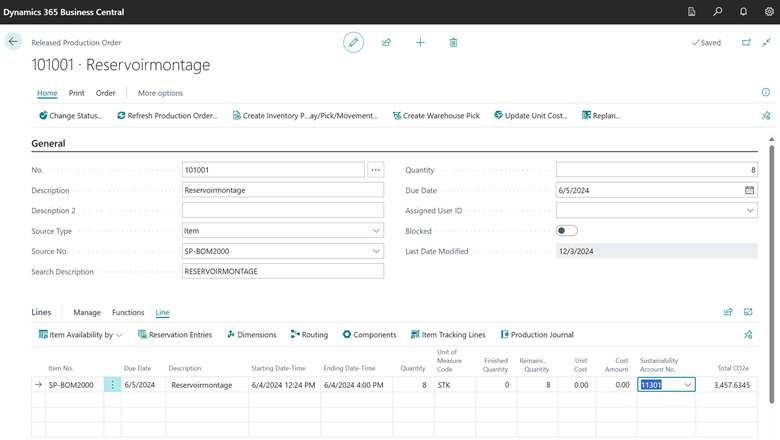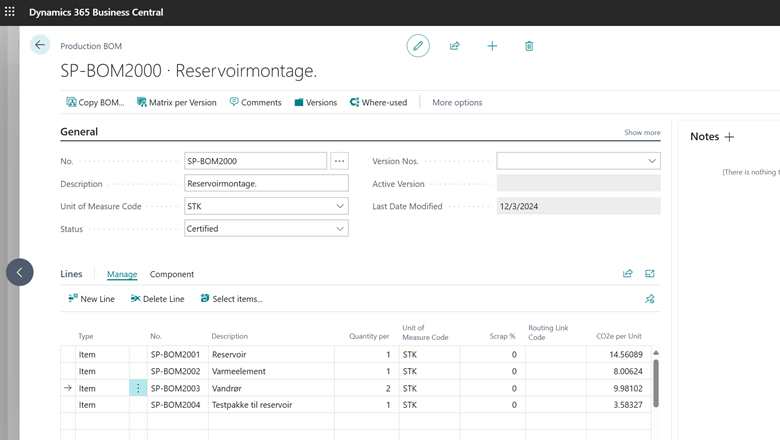Use sustainability Scope 3 value chain in manufacturing
Important
Some of the functionality described in this release plan has not been released. Delivery timelines may change and projected functionality may not be released (see Microsoft policy). Learn more: What's new and planned
| Enabled for | Public preview | General availability |
|---|---|---|
| Users, automatically | Apr 2025 | Oct 2025 |
Business value
Sustainability Scope 3 value chain process automation involves standard ERP processes to streamline the collection, calculation, and reporting of indirect emissions data across a company's upstream and downstream value chain, improving accuracy, efficiency, and compliance with sustainability goals. Scope 3 is significant for accurate tracking because it represents a majority of emissions, influences business decisions, and aligns with many regulations.
Scope 3 is also probably the most complex for measuring because it requires data from multiple sources. For example, from vendors, but also internal operations such as transfers, manufacturing, and so on. This feature provides more control by enabling you to track emissions in the manufacturing process and automatically calculate newly added emission in both downstream and upstream activities related to their inventory.
Feature details
This feature allows you to calculate CO2e for finished goods by using raw material emissions data from purchase documents and adding emissions from manufacturing processes.
To facilitate this, the new CO2e per Unit and Total CO2e fields are available on the following pages
- Production BOM
- Routing
- Components
- Operations
- Production Order Lines
- Consumption
- Output Journals
On the Production BOM page, these fields get their values from the emission details of items. On the Routing page, they're based on emission details from the Work and Machine Centers pages.
These fields are calculated using the Average method from the Sustainability Value Entries page. You can view the calculated values on the production order by running the Refresh Production Order action. Each time you post, Business Central adds new values to the Sustainability Value Entry page related to the finished goods. The values are based on the consumption of raw materials and the output of operations.
The consumption and output entries create a Sustainability Value Entry linked to the Item Ledger Entry, with the output entry also connected to the Capacity Ledger Entry. To avoid double postings for the same emissions, these entries don't post to the Sustainability Ledger Entry, but only to the Sustainability Value Entry. These entries are related only to the item emission valuation.


Tell us what you think
Help us improve Dynamics 365 Business Central by discussing ideas, providing suggestions, and giving feedback. Use the forum at https://aka.ms/bcideas.